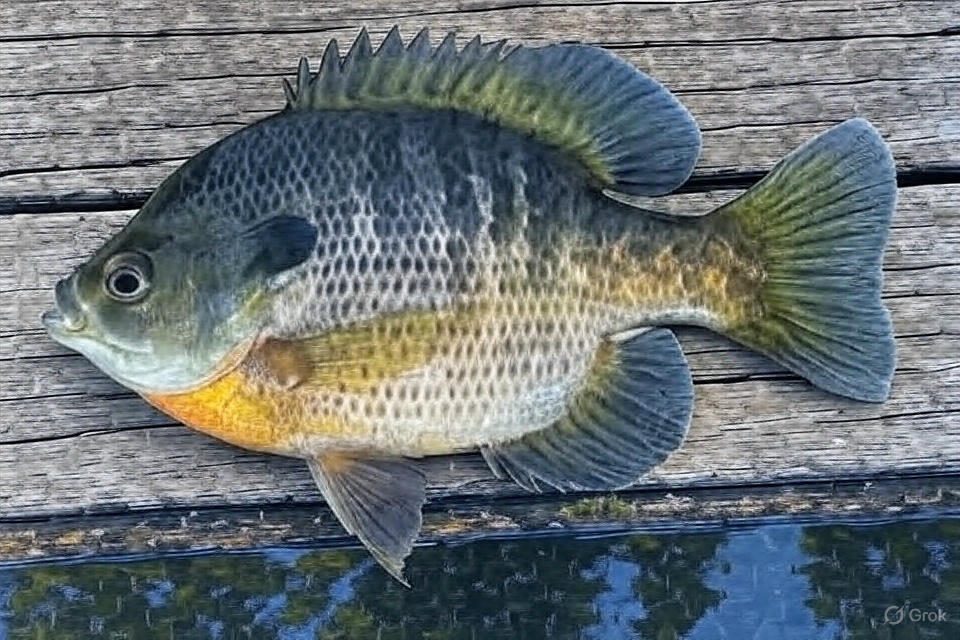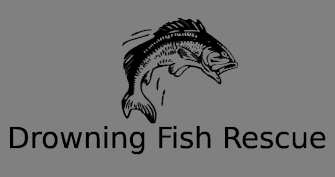
Understanding Bluegill Behavior in May
In May, bluegill are in or approaching their spawning season across much of the United States, particularly in temperate regions. Water temperatures typically range from 65°F to 75°F, triggering bluegill to move into shallow areas to build nests (beds) in colonies. In rivers, these beds are often found in slower-moving or slack water areas, such as eddies, backwaters, or behind current-breaking structures like logs, rocks, or weed beds. Depths of 3 to 6 feet are ideal for spawning, though feeding bluegill may roam slightly deeper, up to 10 feet, in transitional zones. The current in rivers influences their positioning, pushing them toward areas with minimal flow where they can conserve energy.
Bluegill are aggressive during the spawn, making them more likely to strike baits, but they remain sensitive to presentation. Clear water, common in many shallow rivers in spring, demands a subtle approach to avoid spooking fish. Conversely, slightly stained water allows for bolder presentations. Observing the river’s flow, clarity, and structure is critical to pinpointing bluegill hotspots.
The Slip Bobber Rig: The Best Technique
The most effective technique for catching bluegill in shallow rivers in May is fishing a slip bobber rig with live bait. This setup excels in rivers because it allows precise depth control, keeps bait in the strike zone, and adapts to varying depths and current speeds. Here’s how to set it up and use it:
Gear and Setup
- Rod and Reel: Use an ultralight spinning rod (5.5 to 7 feet) paired with a 1000-series reel spooled with 4-pound monofilament or fluorocarbon line. Ultralight gear enhances sensitivity and makes casting small baits easier.
- Slip Bobber Components: Choose a small, sensitive slip bobber (1/2 to 1 inch) for shallow water. Add a bobber stop (thread or rubber) to set the depth, a small bead to protect the knot, and a split shot (size BB or #4) 6 to 12 inches above the hook to keep the bait down in mild current.
- Hook and Bait: Use a #6 or #8 Aberdeen or baitholder hook for live bait. Top baits include worms (red wigglers or nightcrawlers), crickets, or small minnows. Worms are the most versatile, as bluegill readily attack them during the spawn. Pinch worms to 1-inch pieces to match the bluegill’s small mouth.
- Optional Jigs: In slightly deeper areas (8-10 feet) or stained water, a 1/32-ounce jig tipped with a worm or small soft plastic (like a 1-inch tube or curly tail grub) can replace the hook for added flash and action.
Rigging the Slip Bobber
Thread the line through the bobber stop, bead, and slip bobber. Tie the hook or jig to the end of the line, then add a split shot above it. Adjust the bobber stop to suspend the bait 6 to 12 inches off the bottom, just above the nesting beds or where bluegill are cruising. In deeper spots (8-10 feet), set the bait 1 to 2 feet off the bottom to target feeding fish.
Fishing Strategy
- Locate Bluegill Beds: Scout for saucer-shaped nests in shallow, slow-moving areas near cover like submerged logs, overhanging branches, or weed edges. Look for clusters of nests in 3 to 6 feet of water, often visible in clear water. In murkier rivers, use polarized sunglasses to spot fish activity or rely on structure.
- Positioning: Approach quietly, as bluegill spook easily in shallow water. Cast from the bank, a kayak, or wade carefully to avoid disturbing beds. If fishing from a boat, anchor upstream and let the current carry your bait naturally.
- Presentation: Cast the slip bobber rig to the edge of beds or cover, letting the current drift it naturally. The bobber keeps the bait at the desired depth, and the slip feature allows easy adjustment for changing depths. Watch for subtle bobber twitches or dives, indicating a bite. Bluegill often nibble lightly, so set the hook with a gentle upward flick when the bobber moves.
- Adapt to Conditions: In stronger currents, add a second split shot or use a slightly heavier bobber to maintain control. In very clear water, downsize to 2-pound line and smaller hooks (#10) for stealth. If fish are deeper (8-10 feet), target transitional areas near drop-offs or submerged structure.
Tips for Success
- Time of Day: Fish early morning or late afternoon when bluegill are most active. Overcast days can extend feeding periods.
- Multiple Spots: Bluegill colonies are widespread in May, so move if one spot isn’t producing. Check different eddies or backwaters.
- Catch and Release: During spawning, handle fish gently to preserve nests. Use barbless hooks or pinch barbs for easier release.
- Backup Lures: If live bait isn’t working, try small spinners (1/16-ounce) or micro crankbaits retrieved slowly near cover.
Why This Works
The slip bobber rig shines in shallow rivers because it balances precision and adaptability. It keeps bait in the strike zone despite current, allows quick depth changes, and presents bait naturally without spooking fish. Live bait like worms triggers aggressive strikes from spawning bluegill, and the ultralight setup maximizes sensitivity for detecting light bites. By targeting beds and structure in 3 to 10 feet of water, you’re fishing where bluegill are concentrated in May.
This technique, when paired with careful observation of river conditions and bluegill behavior, consistently produces limits of bluegill. Whether you’re a novice or seasoned angler, the slip bobber rig offers a simple yet highly effective way to enjoy the spring bluegill fishing in shallow rivers
